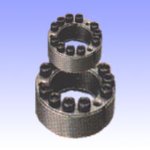We have a Mitsubishi servo (with an electromechanically brake) that rotates a table with a few hundred pounds of mass.
Through set-up and tuning, the servo makes smooth, accurate, and deterministic movements of the table and stops in repeatable positions for the shot pins to engage, and work performed.
The problem we have is when there happens during one of three events.
Light Curtain Interrupt during movement
E-Stop during movement
Power loss during movement
The mass of the table causes a little slippage in the shaft coupler between the table and the servo gear box. This introduces a mechanical offset, and the shot pins won't engage.
Other than allowing the slippage, and re-home on each of the three abnormal occurrences, what options may there be.
I am in controls, I believe the root cause is mechanical deficiency, but as usual, they are asking about controlled stop, and "power-off delay".
Thoughts?
Through set-up and tuning, the servo makes smooth, accurate, and deterministic movements of the table and stops in repeatable positions for the shot pins to engage, and work performed.
The problem we have is when there happens during one of three events.
Light Curtain Interrupt during movement
E-Stop during movement
Power loss during movement
The mass of the table causes a little slippage in the shaft coupler between the table and the servo gear box. This introduces a mechanical offset, and the shot pins won't engage.
Other than allowing the slippage, and re-home on each of the three abnormal occurrences, what options may there be.
I am in controls, I believe the root cause is mechanical deficiency, but as usual, they are asking about controlled stop, and "power-off delay".
Thoughts?





